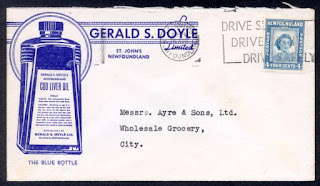The Heritage Foundation of Newfoundland and Labrador (HFNL) and
the Port Blandford Heritage Society present a booklet launch at the Anglican
Church in Port Blandford on Thursday, October 12, from 1:30-3:30pm.
“Everything Was Wrapped in Brown Paper: The Old Shops of Port
Blandford” is the third booklet in the Oral History Roadshow Series produced by
the Heritage Foundation. This booklet focuses on the old shops of Port
Blandford, and people’s memories associated with these places.
“The face-to-face relationship that you had with the clerks by going into the store was much more personal than it is today,” explains Reginald Penney, one of several residents of Port Blandford interviewed as part of the oral history project.
“The face-to-face relationship that you had with the clerks by going into the store was much more personal than it is today,” explains Reginald Penney, one of several residents of Port Blandford interviewed as part of the oral history project.
“The store itself had a different atmosphere” says Penney.
“There were no aisles as you would see in the supermarket type places we have
today. Most groceries were in shelves built in the back or on the sides of the
store, and in the back there might be some dry goods articles, nails, screws
and things like that.”
“The Port Blandford Heritage Society contacted us to help document the old shops that once existed within the community,” says Katie Harvey, a researcher with the Heritage Foundation of Newfoundland and Labrador. “There are only a few shops remaining, so it is important to preserve these memories while it is still possible.”
“The Port Blandford Heritage Society contacted us to help document the old shops that once existed within the community,” says Katie Harvey, a researcher with the Heritage Foundation of Newfoundland and Labrador. “There are only a few shops remaining, so it is important to preserve these memories while it is still possible.”
This booklet is part of the Oral History Roadshow project, which aims to empower and encourage seniors to showcase their memories through a series of public oral history night celebrations.















